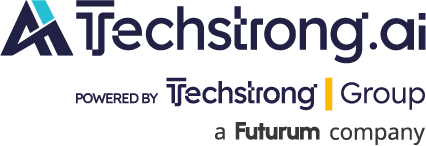
In today’s C‑suite, buzz around AI is deafening — GenAI, agentic agents, AI PCs — all promising revolution. But when every vendor claims to be “the next big thing,” how do leaders separate hype from real ROI? And, critically, where do you invest — and when do you cut bait?
Here’s the hard truth: Your career — even your organization — may depend on the answer.
🚦 Reality Check: From Hype to Hard Value
Sure, headlines tout ChatGPT, AI agents and huge productivity claims. But is it working?
- At Davos, executives warned we’re glimpsing a shift from hype to practicality. AI headlines may oversell, yet the tech is operationally complex when deeply deployed.
- Gartner estimates 85% of AI pilots never scale — often because no one “owns” success at an executive level.
- IBM reports only 25% of recent AI initiatives met ROI expectations — and a mere 16% saw enterprise-wide rollout.
- CFOs are issuing deadlines: Half say they’ll cut funding within a year if measurable ROI isn’t delivered.
Clearly, pilot fatigue is real — and forgiveness is short.
🎯 Picking the Right Bets
What separates buzzy pilots from strategic winners?
1. ROI‑First Discipline
Top AI leaders launch with ROI in mind — not proof-of-concepts for PR’s sake. Start with expected 10–20% incremental gains, not 50% overnight miracles.
2. Small Tent, Big Vision
Pick high-impact domains (e.g., customer service automation, pricing optimization, code generation), then scale strategically .
3. Strong Sponsorship + Governance
Gartner shows pilots rarely scale without C‑suite accountability. An executive sponsor isn’t optional — it’s pivotal.
4. People, Data & Trust
Akamai’s CTO bluntly warns: don’t let LLMs dazzle you — know why and how AI adds sustainable value. Capgemini found only 2% of orgs have scaled agentic AI — due to trust gaps and talent issues.
5. Governance as Bedrock
Under 10% of companies have proper AI governance; without it, adoption stalls.
Deloitte stresses that C‑suite must pick up the mantle: Technical, regulatory and risk fluency aren’t optional — they’re mission-critical.
✂️ When to Cut Bait
AI isn’t magic dust. Know when to pivot:
- ROI < 10% after 6 months, with no clear path to scale
- No executive sponsorship — if no one is accountable at board level, don’t expect transformation
- Data foundation weak — if data is siloed, ungoverned or lacks lineage, AI efforts will sputter (emerging risk alert)
- Employee pushback — if business users don’t see value, pilots face extinction
Cutting failing pilots isn’t resignation — it’s disciplined portfolio management.
🚀 When to Double Down
Signs it’s time to go full throttle:
- Early ROI hits 10–15% and impact area has scaling potential
- Cross-functional engagement — teams are pulling data, sharing feedback, adapting workflows
- Governance trust builds — security posture, compliance frameworks, ethical guardrails in place
- Cultural momentum — business users aren’t just using AI — they’re advocating it
At this point, build the governance, staffing and roadmap structure to shift from pilot to platform.
⚖️ Balancing Ambition With Discipline
The stakes are high:
- McKinsey counts that nearly all C‑suite now understands GenAI, and executives expect widespread adoption — but employees are already using AI faster than leaders realize.
- Meanwhile, economic turbulence means budgets are fragile — and CFOs will not support subsidies without outcome.
This means CEOs and CXOs must answer three hard questions:
- Is this AI project solving a real problem — not just a shiny one?
- Have we built the right people, data and governance foundation to support it?
- If it’s working, can we scale it — systematically — before the funding window closes?
🧭 How to Lead With Impact
- C‑Suite needs fluency. Deloitte urges C‑leaders to upskill in technical, risk, and regulatory terrain — not just delegate to the CIO or CAIO.
- Define ROI early, monitor rigorously. Triple down on pilots delivering >10% gains and set quarterly kill/scale gates.
- Governance is a performance enabler. Mature policies boost trust — and fast-track enterprise use .
- Build internal champions. Empower mid‑manager “AI natives” (millennials already using tools) to spread skills and momentum.
- Trust evolves. Start with human-in‑the-loop systems; earn trust before automating fully.
📝 The Bottom Line
AI isn’t “launch and forget.” It’s a strategic technology — one demanding discipline, governance, cultural alignment and ruthless portfolio management.
Leaders who chase every shiny promise — without discipline — will pay the price. But those who choose thoughtfully, adjust swiftly and scale smartly? They’re the ones building tomorrow’s winners.
Your job — and your organization’s future — depends on choosing wisely.

